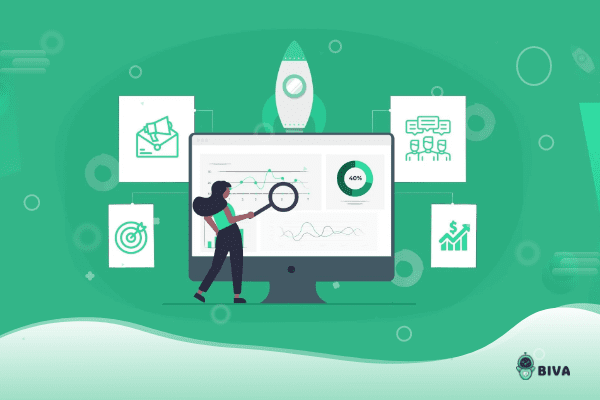

While it is important for any e-retailer to review revenue in a holistic fashion to monitor the business situation, slicing and dicing the same at a functional level helps with in-depth understanding. Though this entire game sums up ultimately to the same overall revenue, when seen from the various lens, retailers get valuable insights that have various business implications. These insights, when acted upon can lead to the success of future efforts and ultimately drive growth.
In our continuous efforts to make things easy for e-retailers, we have detailed (below) the various ways of interpreting e-commerce revenue and its components.
Evaluate the Efficiency of Marketing Activities:
Retailers can measure the effectiveness of marketing (involving spend) initiatives’ goal of driving revenue individually and compare it with the contribution of brand awareness/association in motivating customers to purchase. This will help in understanding the periodicity of marketing campaigns working for them.
As some marketing initiatives are taken up purely for brand awareness purposes, their indirect contribution which gets accounted for via organic traffic growth should be evaluated differently.
Also, retailers should understand the mix of revenue contribution from advertising traffic and the sources of interaction, over different periods/ seasons, to be able to evaluate the alignment of the marketing activities to the business objectives.
Determine the Optimal Mix of New Vs Returning Customers:
Segmenting the revenue by customer type enables retailers to measure two components– incremental share of wallet contribution from the existing customer base and the growth in business due to new acquisitions.
Since it is equally important for the business to engage with existing customers while acquiring new ones, the above segmentation allows to monitor deviation (if any) and understand the direction in which the business is headed.
For instance, if the revenue contribution by returning customers is not on par with that of new customers, retailers can formulate strategies (like new product introductions) to motivate them to do repeat purchases.
Additionally, retailers can track the revenue over time to understand the effect of seasonality on customer purchasing behavior and allocate budgets effectively.
Identify Popular Products/ Categories:
Retailers can also analyze revenue from a product perspective and quickly look at the incremental contribution by top-performing products, new entrants, and simultaneously see the impact of least performing products and product exits.
Segregating the revenue at the category/ product level helps retailers spot popular product attributes. This will help them understand if the product introductions are on track and meet customer expectations.
Furthermore, retailers can look at the e-commerce revenue of the product category by geographic location to understand individual category’s preference across regions.
Additionally, one can monitor the derived metric “revenue per impressions” at the SKU level to get insights on product arrangement.
Optimize Quality and Quantity of Transactions:
Breaking down the e-commerce revenue into a number of transactions and average order value (AOV) gives an insight on which one is driving the revenue – quantity (frequency) or quality (AOV) of transactions.
When these components are monitored for a considerable time period, businesses can identify the usual patterns which indicate the natural behavior of their customers. They can then position their brand accordingly to shift the contribution of these components to their advantage.
For instance, offering discounts if the cart value crosses a certain limit motivates customers to add more to the cart thereby increasing AOV. Similarly, promoting related products and services based on purchase history and implementing loyalty programs helps in increasing purchase frequency.
Further, segregating e-commerce revenue by order status gives an idea of opportunity cost due to canceled, failed, and returned orders. Retailers can also track revenue by payment method/ device type to get insights on the preferred choices.
Halo allows e-retailers to demystify revenue from various angles and generate valuable insights that they can use to identify what is working and what is not working in their favor and change strategies accordingly to grow their e-commerce business.
Conclusion:
Looking at e-commerce revenue from the above perspectives on a regular basis helps e-retailers to understand the impact of functional strategies on top-line and simultaneously pinpoint the areas that require immediate attention. With this information, they can tweak various practices and optimize the efforts of respective functions to see the business grow.
Related Posts
Marketing Ideas
Product Foundations


